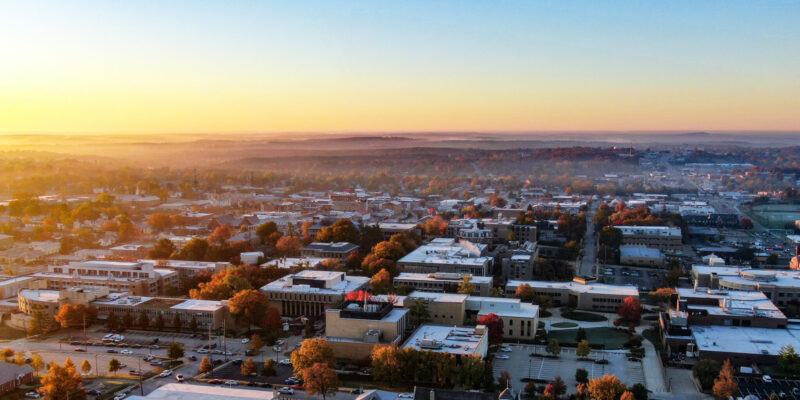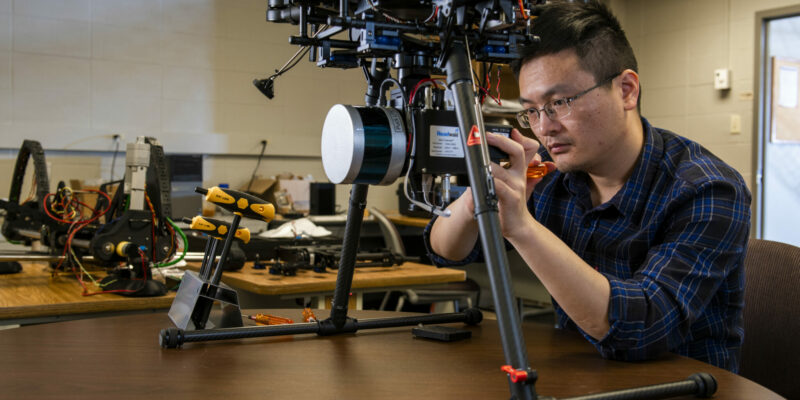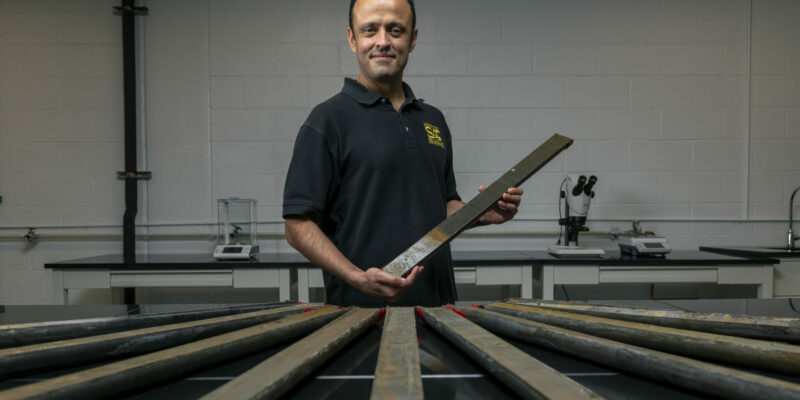Science & Tech
$423 million in gifts and record fundraising year conclude S&T’s Rolla Rising campaign
A multiyear fundraising initiative, Rolla Rising: The Campaign for Missouri University of Science and Technology, began in 2016 with a $150 million funding goal and ended June 30, 2021, with a record-breaking $423.4 million in gifts, Joan Nesbitt, vice chancellor of University Advancement at Missouri S&T, announced today (Thursday, Sept. 30).
Read More »Missouri S&T researchers work to extract pollutants from water
t is an uphill battle to extract pollutants such as heavy metals, hydrocarbons, and radioactive metals from industrial waste and water run-off. Researchers typically focus on cleaning and purifying wastewater to prevent those pollutants from entering the environment and damaging ecosystems. But a team of researchers from Missouri S&T have devised a way to not only clean up heavy metals from the wastewater, but also facilitate recycling the chemicals used and reusing the metals that are extracted.
Read More »Missouri S&T researchers patent implants made with bioactive glasses and metals
Medical devices made of bioactive glasses and metals that dissolve at the end of their operational lifespan could replace other types of implants and eliminate the need for invasive removal once they have served their purpose, say researchers at Missouri S&T. The researchers recently received a patent for the device.
Read More »Missouri S&T offers summer research for students from HBCUs
Eight students from historically Black colleges and universities (HBCUs) participated in a summer program at Missouri S&T that is designed to encourage engineering students from underrepresented groups to pursue graduate studies. This year, students in Missouri S&T’s Summer Engineering Research Academy (SERA) visited Rolla from Oakwood University in Huntsville, Alabama, Tennessee State University in Nashville and Morgan State University in Baltimore.
Read More »Missouri S&T researcher wins NSF CAREER Award for 2D metals research
As electronic devices get smaller and faster, computer chips must get thinner to save space and improve performance. Dr. Chenglin Wu, an assistant professor of structural engineering at Missouri S&T, has won a $500,000 CAREER Award from the National Science Foundation for his work in two-dimensional metals – metals that are three atoms thick – for use in computer chips, sensors and coatings.
Read More »Missouri S&T developing first user-friendly software platform to update dynamic networks
Researchers at Missouri S&T are developing a new approach for updating dynamic networks – like those used to track viruses, connect people on social media and coordinate transportation systems – that they say is the first scalable, expandable and user-friendly solution to analyze who is using the network, where they are, and what information and […]
Read More »S&T chemist works to recycle fossil fuel emissions
A researcher at Missouri University of Science and Technology is working to reduce greenhouse gases by designing a catalyst to convert the environmental pollutant carbon dioxide into new fuels and chemicals while using as few new resources as possible.
Read More »Missouri S&T Ph.D. candidate wins $70,000 Laegeler Fellowship for renewable energy research
Research involving drones mounted with thermal and hyperspectral cameras to inspect solar panels for damage has won a $70,000 fellowship for Xinzhe Yuan, who will complete his Ph.D. at Missouri University of Science and Technology later this year. The Laegeler Sustainable Energy Fellowship – from Concept to Reality, created by two Missouri S&T graduates, will provide a stipend and benefits for Yuan to conduct postdoctoral research at S&T.
Read More »CAREER Award funds research on earthquake history
A researcher at Missouri S&T has won the National Science Foundation’s Faculty Early Career Development (CAREER) Award for his research into the history of earthquakes along the North American-Caribbean tectonic plate boundary, which runs through the Caribbean Sea from Haiti to the Guatemala-Mexico border. The research will provide new insights for elementary and middle school students and will help scientists better understand how and when earthquakes occur in the region.
Read More »







